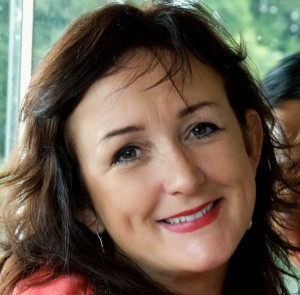Interview: Dr. Catherine Owens, chair of the ESR Subspecialties and Allied Sciences Committee
Organisations that represent professionals working in radiological subspeciaties and allied sciences are vital parts of the ESR community. The ESR has its own body – the Subspecialties and Allied Sciences Committee – that is dedicated to discussing and highlighting issues that affect these groups. We spoke to chairperson Dr. Catherine Owens to find out about her role, the committee’s functions and some of the items on its current agenda.
ESR Office: What is the main purpose of the Subspecialties and Allied Sciences Committee (SASC) and how does it operate?
Catherine Owens: The SASC was formed to unite all of the important subspecialties within clinical radiology, and the important allied healthcare professionals. The committee is made up of the presidents of each of the ESR’s Subspecialties and Allied Sciences Member Societies. This provides a forum to highlight the common issues within radiology and to try to empower the individual groups to understand and help find joint solutions. As a united group we are more able to increase our powers to lobby national and EU groups to solve some of the current challenges facing radiologists.
Practically speaking, the committee coordinates initiatives related to pertinent issues within all subspecialties in radiology and allied disciplines, in cooperation with the Education Committee for specific educational issues and with the Quality, Safety and Standards Committee for specific professional issues. In addition, the committee assists the European Congress of Radiology Programme Planning Committee in the preparation of the educational and scientific programme for the annual ECR meetings.
Specific tasks and responsibilities of the group include revising detailed curricula for subspecialty training in liaison with the Education Committee; devising Strategies to support the provision of subspecialist radiology; providing liaison between European subspecialty societies, allied sciences societies and the ESR; and contributing to the overall strategies of the ESR related to professional issues, training harmonisation and research collaboration.
ESR: What is your background within the ESR committee structure and what motivates you to be involved?
CO: Having been the Treasurer of the ESPR from 2003 to 2008 and then ESPR General Secretary from 2008 to 2013, I became well acquainted with the many problems facing subspecialty societies.
I also saw the ESR from the perspective of a regular ECR attendee and congress lecturer since 2002, then as chairman of the paediatric organising committee for ECR 2008.
I was inspired by the strength of community at ESR, and the professionalism and dedication of the ESR office staff. I was, and remain profoundly impressed at the excellence achieved within the ECR meeting organisation and also the set-up of the European School of Radiology (ESOR) and the dedication to improving radiological training across Europe. The ongoing subcommittees and working groups produce excellent documents for circulation to the ESR members. EIBIR has grown considerably to be a considerable force with great influence on research at EU level.
The practical application of solutions, and the combined vision of senior radiologists to enhance training of young radiologists to address the shortage of staff across Europe are vital to our growth as a specialty.
ESR: What are the main issues currently on the committee’s agenda, and how are they being tackled?
CO: The shortage of trained radiology staff, ever increasing workloads and more intense scrutiny of practice with the use of ionising radiation, all remain real challenges across all radiological subspecialties. Threats from outsourcing in a climate of financial recession are all real problems.
Specific issues of turf battles with vascular surgeons, cardiologists, neurosurgeons and other clinicians all pose problems, which we believe are best served by us uniting together to form a strong unified group of clinical radiologists. This is one of the roles and mandates of the SASC
ESR: What new issues do you think the committee will be dealing with in the coming years?
CO: All of the above issues continue to pose challenges, which the SASC hopes to continue to address. The potential implementation of radiological decision support to help with justification of procedures will be explored across all subspecialties. The introduction of structured reporting will be a challenge, which needs to be met by all subspecialty groups. Working together to explore and tailor systems to best suit our needs will involve strong teamwork and discipline.
ESR: You are also on the steering committee of the ESR’s EuroSafe Imaging campaign. What is your role there and is there any connection with your work on the Subspecialties and Allied Sciences committee?
CO: As a paediatric radiologist with a major interest in cardiothoracic CT, I have always had a major interest in radiation protection. I have been committed to improving justification and optimisation of imaging in children, with a portfolio of publications in this area. I have been fortunate to be involved with the ESR radiation protection group, as a subcommittee member, under the excellent leadership of Prof. Peter Vock for four years. This inspired the joint ESR/ESPR EU grant application, led by Prof Guy Frija and the ESPR CT Task force, led by myself and Prof Erich Sorantin. We are currently collecting data on diagnostic reference levels across Europe to inform the project.
ESR: How can ESR members learn more about the SASC or contribute to its efforts?
CO: ESR members may contact their subspecialty representatives, who attend the SASC meetings, to keep informed of the current areas of importance, which are highlighted and discussed at the meetings.
We believe that we have an important role in representing all of our members in order to grow as a strong united specialty.



